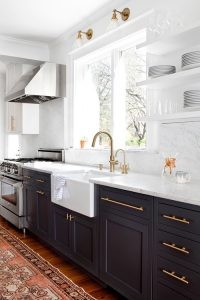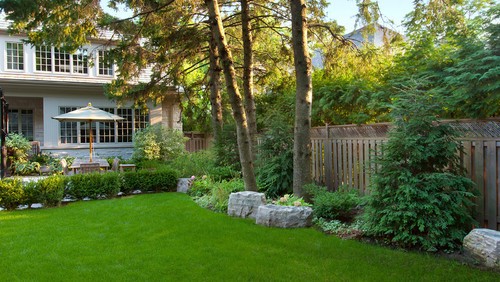By Samantha van Egmond in association with 
When you think you’ve found the one, it can be easy to overlook the finer details. However, buying a property requires a discerning eye. Even if you’ve done your fair share of rental inspections in the past, viewing a home that might be yours forever calls for a few key considerations – this list is a good place to start.

Photo by Tamara Magel Studio
In the Inside
Cracks in the walls
Run an eye over walls (inside and out) and ceilings for cracks, which can be signs of movement or subsidence – depending on the severity, this can be very costly to repair. If you do come across anything that’s a cause for concern, it might be necessary to call in a qualified building inspector.
 Plumbing and water pressure
Plumbing and water pressure
After checking the plumbing and pipes both inside and out for leaks, turn on the taps in the kitchen, bathroom and laundry to check water pressure, colour and drainage.

Photo by STEFANI STEIN

Pests and termites
Hollow-sounding timber such as beams and floorboards can be an indication of termite damage. Find out – both from the agent and the local council – whether the area is prone to termites or other insects and pests. Be wary of mouse traps, rat poison and cockroach baits throughout the house, which could be signs of pest trouble.
Tip: If you’re serious about buying, consider getting a professional pest inspection of the property – a thorough check from the front door through to the garden will be worth the investment for peace of mind.

Room layout
While knocking down a wall or two could be an option, it pays to take a step back and think about just what you will need to do to make a new home suit your lifestyle. Are there enough rooms? Will you need to add more storage space? It’s one thing to see potential, but another entirely to find the time and budget to transform a new home.
 Orientation
Orientation
Checking the direction in which the house faces will give you a good idea of whether the living areas will be hot or cold. Remember to consider all seasons and not just how the space feels at the time of inspection. Is there plenty of natural light? What about airflow? Views are also important as this is an element you will have less control over.
Air conditioning systems
It can be easy to forget about climate control when it feels just right on your first visit. Inquire about the age and working order of any heating and cooling systems for a better idea of when and if they’ll need replacing.

Flooring
If you plan to remove the carpet, ask about what lies underneath or see if there’s a corner you can lift to take a peek –installing new flooring can be costly, so knowing what to expect early on can be very helpful. Find out if the floorboards require polishing or whether they’ll need replacing.
 Damp and mould
Damp and mould
Check for water marks, stains and paint damage, as well as mould – these can indicate that there’s a ventilation problem that will need to be fixed. Opening cupboards and cabinets will help you to detect any smells or damp and mildew.
Power and electrical wiring
If switches and sockets look like they’ve seen better days, it could mean the wiring is old and will soon need replacing. If you have any doubts, enlist an electrician to provide a professional opinion before making an offer. Locate the home’s power points to see if they’re sufficient and well located, or whether you will need to add more.

Normark Landscapes
On the Outside
Garden
There are plenty of ways to fix an untidy garden, but having a quick walk around the perimeters to see just what you’re in for is a good idea. What types of plants are already growing? Will it require ongoing maintenance? If you’re a green thumb this might not be an issue, otherwise you may want to consider the upkeep required.

Photo by Matt Gibson
Extensions and renovations
If you’re planning to renovate, consider the costs and amount of work required – particularly in the kitchen and bathroom. Some changes might require council approval, such as removing walls or building a deck, so it’s best to think about any work needed beforehand to avoid disappointment down the track.

Photo by Hip Brown Home
Privacy
Having your home overlooked by neighbours isn’t ideal, but keep in mind there are plenty of ways to solve this dilemma – screens, fences or growing green walls using tall plants can all help to block noise and create a sense of privacy.


Fencing
Don’t forget to check all surrounding fences and gates for damage – if repairs are needed, you may be required to contribute to the overall cost.
Roof and downpipes
Take a walk around the perimeter of the house to check that roof lines are straight and free from deflections, as well as noticing cracked, sliding or missing tiles. Downpipes should be running into stormwater drains as opposed to the ground, to prevent muddiness and flooding.
Trees
Trees can be expensive to remove, so check the age and condition of those nearby. Do any have the potential to cause damage with fallen branches? Do the neighbours have trees that overhang into your yard? Is there potential for leaves to clog up the guttering? It is also worth noting how much shade is currently provided, and whether a mature tree – or an alternative such as a shade cloth or pergola – will make the backyard more hospitable.















